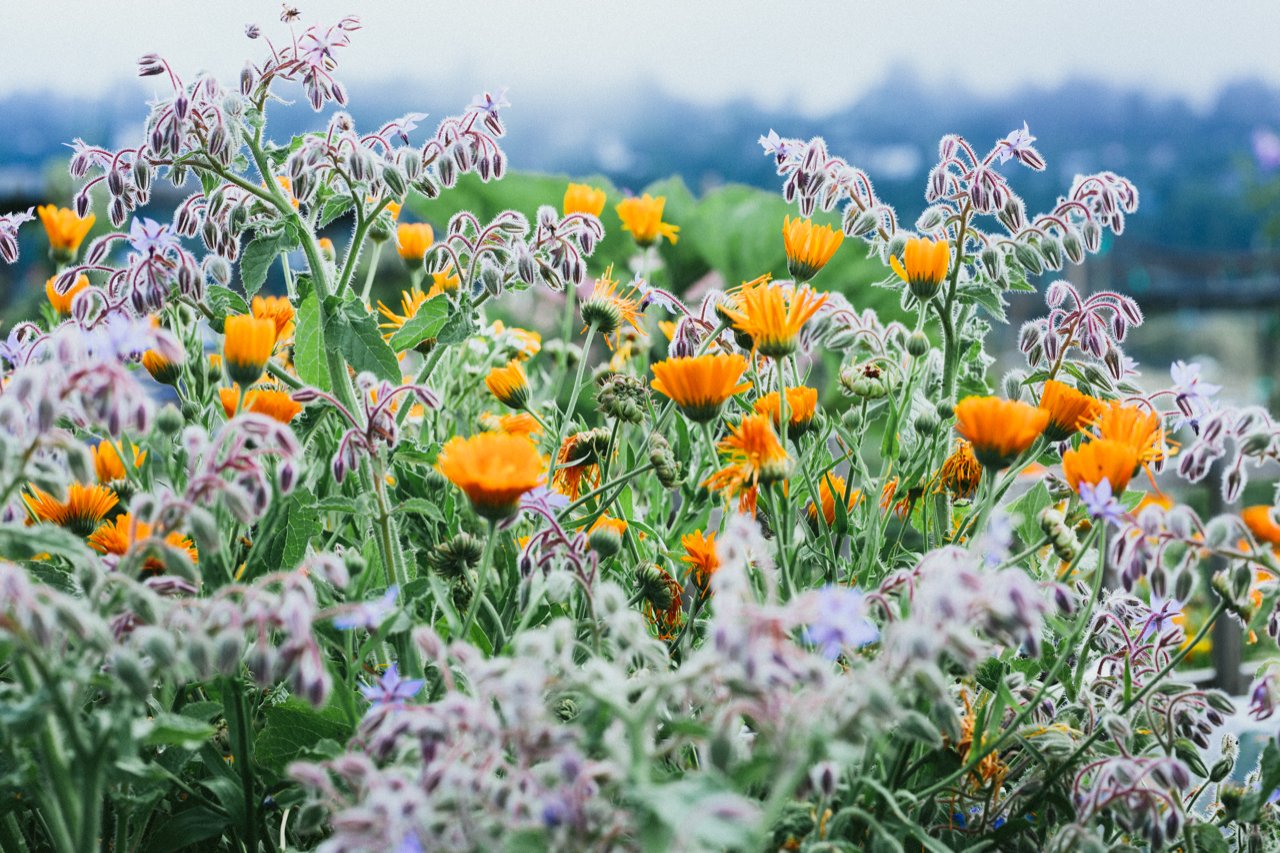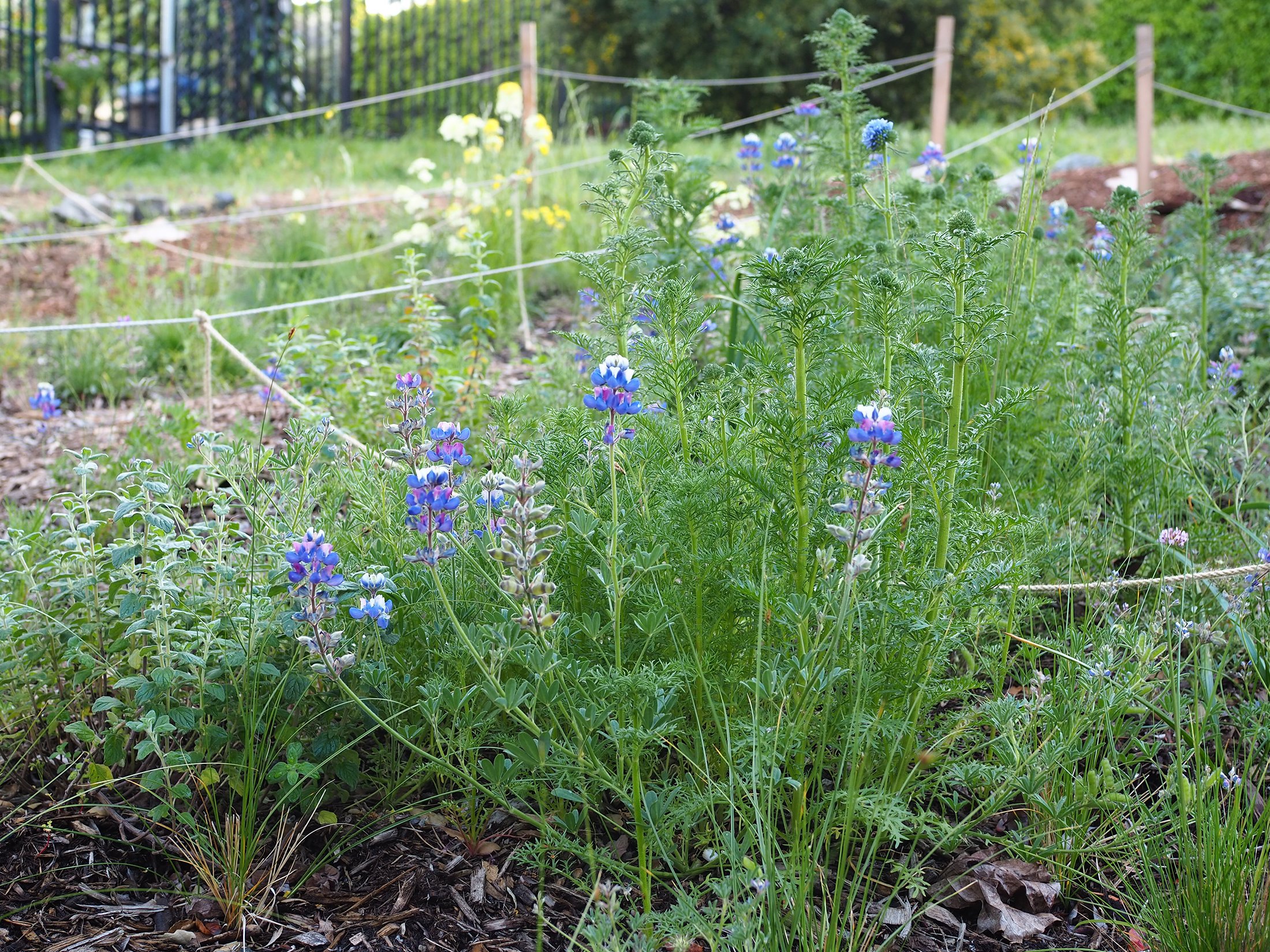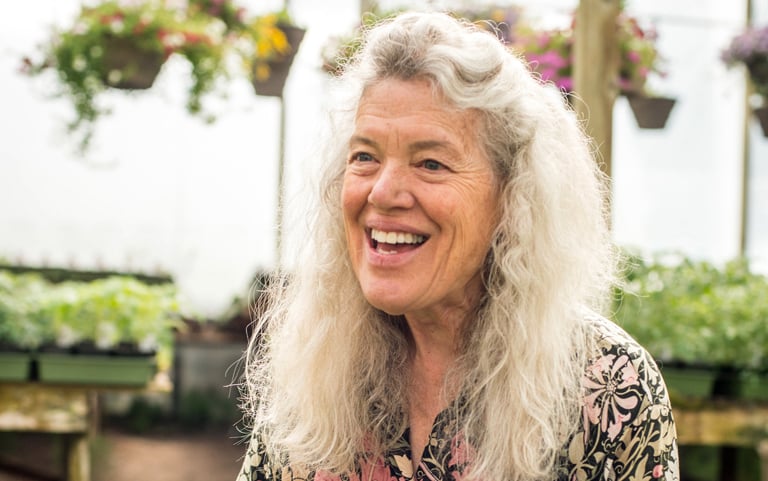

Contributor
- Topics: Archive, Nature is Good For You
The author, a freelance writer and photographer, is also active on behalf of The Arboretum Foundation, University o f Washington. Her book, Wild Shrubs: Finding and Growing Your Own, was published by Pacific Search Press in 1978.
The west coast states are well known for their giant Douglas firs, sequoias, red woods, sugar pines and stately oaks. Much less is known about the prolific wild mushrooms that thrive, not only beneath these giant trees, but in a wide variety of less luxuriant habitats.
Thousands of species of fungi grow in forests, meadows, sand dunes and deserts from the salty shores of the Pacific Ocean to alpine slopes on the mountains. The abundance of these strange plants has encouraged the sport of mushroom hunting. It is a pursuit without bounds of age or occupation, an excuse to get out into the woods and enjoy the fruits of nature.
Different kinds of fungi fruit throughout the year entirely dependent upon the right combination of circumstances. When benevolent skies and the life-giving sun combine to provide ample moisture and the right temperature, the filmy white threads of subsurface mycelium are stimulated to produce colorful fruits above ground. Fairy rings magically spring up in lawns. Enormous, bucket-size cauliflower mushrooms unfold at the bases of tree trunks. Inky caps open their fragile parasols above brown decaying leaves and then slowly melt away; only stains remain where they grew. The multifarious fungi reveal many shades and all the colors of the rainbow.
In the Pacific Northwest the greatest variety of mushrooms reach fruiting peak in September and October. In the milder climate of northwestern California mushrooms fruit in abundance during November and December. Mushroom hunters follow the sun south and seek their quarry in southern California in January and February. During these months of the year you will find dedicated mushroomers stooped low to the ground, intent on finding choice edible specimens. They come equipped with gathering baskets, whistles, compasses and cameras.
Gathering mushrooms for culinary use demands no scientific knowledge. It is enough to learn, with the help of a competent guide, how to recognize a few of the common edible kinds, and how to distinguish them from deadly poisoners. The mushroom forager would do well to familiarize himself with the genera Amanita and Galerina, for it is among these that most poisonings occur. The inedible Amanita pantherina causes the most problems because it resembles other brown-capped mushrooms that are considered to be edible. The most dangerous species are the white Amanita verna and the yellow-green or gray-capped Amanita phalloides, both known as “destroying angels.” Galerina autumnalis is another fungus of ill-repute. It is poisonous and grows on decaying logs and stumps but often appears in lawns and flower beds that are mulched with chipped bark or sawdust. As with the gathering of other kinds of wild plants, the mushroom hunter must use caution to remain healthy and alive.
Edibility of mushrooms is determined only by human experience for humans. Squirrels have it figured for squirrels and slugs for slugs. But never take a slug’s word for your own safety. This slippery little creature consumes, with great fervor and amazing speed, poisonous amanitas and peppery russulas, and, in fact, almost any fleshy mushroom in its path, including our favorite edibles. It is equally advisable to ignore questionable folk tales that have been passed on through generations since ancient man tasted his first mushroom. Personal allergic reactions surface in mushroom eating ventures. If you are trying an edible species for the first time, eat only a small amount and give it time to settle gracefully into your metabolism. One other word of caution. When you pick mushrooms that grow in gardens, fields, orchards or alongside roads, make certain the area has not been sprayed recently with pesticides or other chemicals that leave a residue on the fruiting bodies.
Now that you are alerted to the dangers, let’s get on with the enjoyable subject of wild mushrooms for the table. The garden compost pile that includes well-decayed grass clippings, vegetable peels and shrub prunings furnishes ideal growing conditions for the edible Agaricus augustus. Its scaly, brown cap shaped like an upside-down cup that is balanced on a sturdy, cream-colored stem. As the fungus matures, it expands into a broad parasol. Its bulk and fine flavor have earned for it the popular name “the prince.”
A common mushroom that irritates tidy gardeners but is a tasty edible for mushroom fanciers is the fairy ring, Marasmius oreades. Discard the tough-textured stems and gather only the tender caps. Growth begins when a tiny, wind-borne spore settles in the soil, germinates and radiates a disc of mycelial threads which grow outward. Since the rate of growth in all directions is roughly equal, the shape of the mycelium is that of an ever-expanding wheel. The mycelium lives for years, periodically sending up fruiting bodies at the periphery when conditions are right.
Two small puffballs occasionally appear in gardens, usually in hard-packed areas that have remained undisturbed for several years. The white, scaly-capped Lycoperdon perlatum and the brown, smooth-capped Lycoperdon pyriforme are equally tasty. When you collect puffballs, choose only young specimens that have firm, white flesh in their interior. When puffballs mature the flesh changes to tan or dark brown dry powder that contains the reproductive spores.
The king of the puffballs is Calvatia gigantea. Specimens sometimes span twenty-four inches and weigh more than thirty pounds. Inch thick slices sautéed in butter or margarine make a gourmet dinner. Somewhat smaller, and stronger in flavor, is the rough-capped puffball, Calbovista subsculpta, that grows beside mountain trails and logging roads.

Shaggy mane, Coprinus comatus, is another that prefers undisturbed packed soil at the edge of gravel roads and in lawns and meadows. The closely packed gills, white at first, change to soft pink, then brown and finally become completely black. At this stage they turn to ink. Shaggies must be gathered in their young, white-gilled, stage and eaten within a few hours.

The honey mushroom, also known as oak root fungus, Armillaria mellea, is the bane of nurserymen and orchardists because it is a root parasite that destroys living trees, both hardwoods and conifers. This fungus has Jekyll and Hyde tendencies that confuse collectors. Cap colors vary from pale tan to dark reddish-brown, possibly an effect from the trees the fungus is associated with. Usually it grows to a height between two and four inches, but in some locations the fungus reaches up to eight inches. However, its scaly cap with wavy margins, white spores and habit of growing in dense clusters are a combination of features that aid identification. The honey mushroom is good and edible. Judging by its common appearance and abundance, this species does not seem to be as restricted as other fungi in its environmental requirements.

A stroll through conifer forests at medium elevations in the mountains rewards with a vast selection of edible mushrooms. The genus Hygrophorus has species fruiting in spring as well as autumn. Hygrophorus bakerensis is among the most prolific in this genus. Boletus edulis, Boletus mirabilis and Leccinum aurantiacum are the most popular of the spore mushrooms. Spore surface beneath the cap consists of sponge-like material instead of the familiar blade-like gills that are the reproductive structures of many fungi. Unfortunately the bolete group is favored by insect larvae so it is necessary to check carefully, even very young specimens, before adding them to the gathering basket.

Another inhabitant of conifer forests is Collybia acervata. A dense cluster is enough for several meals. When the caps first force their way through the forest floor of green moss, their surface is moist and dark brownish-tan to reddish-tan. As the caps become dry, they fade to cream color. This reaction is known as hygrophanous. Regardless of color, the clusters are edible if they have not started to decay.
The little orange-peel mushroom, Aleuria aurantia, is attracted to recently disturbed soil. Look for it in bulldozed areas on construction sites or road cuts. Because the brightly colored cups are extremely fragile and have little flavor, they are more attractive as subjects for photography. However, some mushroom collectors use them in salads.
The ultimate in flavor of wild mushrooms is enjoyed when the fruits are cooked and consumed soon after they have been collected. But if baskets are overflowing, most species will keep well dried, canned, pickled or frozen. Some collectors like to sample each species separately and enjoy its full flavor and aroma, like a fine wine. They sauté thin slices in butter until heated through, and add a small amount of cream and a sprinkle of salt.
Mushroom societies have developed along with the growing interest in collecting wild edibles. These groups offer an opportunity for the beginner to learn how, what and where to collect fungi. Their members are generous in sharing favorite recipes and many societies have compiled booklets of gourmet specialties.
Mushroom hunting is a fascinating way to enjoy the out-of-doors, and, at the same time, add variety to the dining table.
Share:
Social Media
Garden Futurist Podcast
Most Popular
Videos
Topics
Related Posts

January Showers Bring February flowers…
Fall 2022 It may not quite have the same ring to it as the old English proverb, but it has a lot more truth to

Healing Gardens
Spring 2022 Emily Murphy believes gardens hold the key to saving our health, our communities, and our planet. In her new book Grow Now Murphy

Your Keystone Plant Matrix with Garden Futurist Doug Tallamy
Spring 2022 Listen to the full Garden Futurist: Episode XIV podcast here. If you take Keystone plants out of your local food web, the food

A Botanical Force
Listening to Alice Doyle recount the origin stories of Log House Plants’ most popular introductions, educational campaigns, and innovative collections is a great way to








Responses